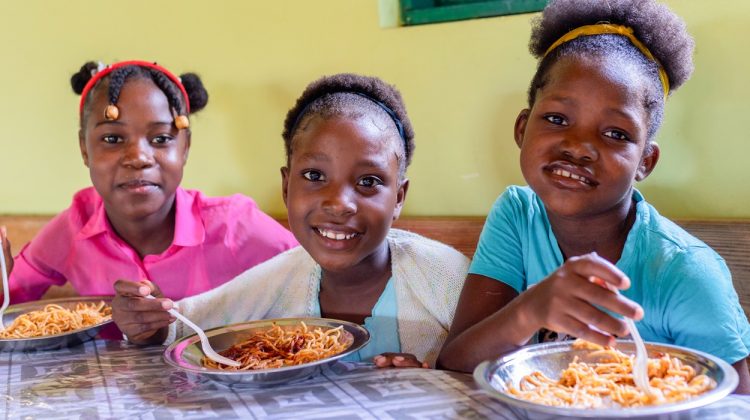
In a world where abundance coexists with deprivation, the issue of hunger remains a stark reality for millions. Food insecurity, characterized by inadequate access to nutritious food, poses a significant challenge to global well-being.
However, amidst this crisis, numerous organizations are dedicated to providing sustenance to those in need.
In this comprehensive exploration, we delve into the vital work of food for the poor organizations, shedding light on their initiatives and the eligibility criteria for individuals seeking assistance.
Understanding Food Insecurity
Before delving into the efforts of organizations combatting food insecurity, it’s imperative to grasp the magnitude of the issue. According to recent estimates by the Food and Agriculture Organization (FAO), approximately 9% of the global population, or around 690 million people, suffer from chronic hunger.
This statistic underscores the urgency of addressing food insecurity on a global scale and emphasizes the critical role of organizations dedicated to combating hunger.
Food For The Poor Scandal
Prominent Food for the Poor Organizations
Several organizations around the world are at the forefront of the fight against hunger, providing vital assistance to vulnerable populations. Here are some prominent examples:
World Food Programme (WFP):
The World Food Programme, a United Nations agency, is the world’s largest humanitarian organization addressing hunger and promoting food security.
Operating in over 80 countries, the WFP provides food assistance to populations affected by conflict, natural disasters, and economic instability. Through initiatives like school feeding programs, nutrition interventions, and emergency food distribution, the WFP strives to ensure that no one goes hungry.
Feeding America:
Feeding America is the largest domestic hunger-relief organization in the United States, serving individuals and families facing food insecurity across the nation. With a network of food banks, pantries, and meal programs, Feeding America distributes billions of pounds of food each year to communities in need.
Through partnerships with local agencies and food donors, Feeding America helps alleviate hunger and improve food access for millions of Americans.
Action Against Hunger:
Action Against Hunger is an international humanitarian organization committed to saving the lives of malnourished children and providing communities with sustainable solutions to hunger.
Through nutrition programs, water, sanitation, and hygiene interventions, and emergency response efforts, Action Against Hunger works to address the root causes of hunger and malnutrition in over 45 countries worldwide.
Food for the Poor:
Food for the Poor is a nonprofit organization dedicated to serving the poorest of the poor in Latin America and the Caribbean. With a focus on holistic development, Food for the Poor provides food aid, housing assistance, healthcare services, and educational support to communities in need.
Through partnerships with local organizations and donors, Food for the Poor aims to break the cycle of poverty and empower individuals to build brighter futures.
Eligibility Requirements for Food Assistance
While the eligibility criteria may vary depending on the organization and program, there are common requirements for individuals seeking food assistance. These requirements ensure that resources are allocated effectively to those who need them most. Some key eligibility criteria include:
Demonstrated Need
- Applicants must demonstrate that they lack the financial resources to access an adequate supply of food for themselves and their families. This may involve providing information about household income, expenses, and other relevant factors affecting food security.
Income Verification
- Many organizations require applicants to provide proof of income, such as pay stubs, tax returns, or government assistance documents. Income verification helps organizations assess financial need and determine eligibility for food assistance programs.
Household Size
- Eligibility often takes into account the number of individuals in the household, as larger families may require more assistance to meet their food needs. Applicants may be required to provide information about household composition, including the number of adults and children living in the household.
Residency
- Some food assistance programs have residency requirements, limiting eligibility to individuals who reside within a certain geographic area or jurisdiction. Applicants may need to provide proof of residency, such as a utility bill or lease agreement, to qualify for assistance.
Vulnerable Populations
- Certain food assistance programs prioritize assistance for vulnerable populations, such as children, the elderly, individuals with disabilities, and those experiencing homelessness. Applicants may need to provide information about their demographic characteristics and specific needs to qualify for targeted assistance.
Conclusion
Food for the poor organizations play a crucial role in addressing hunger and food insecurity around the world. Through their tireless efforts and initiatives, they provide essential sustenance to those who need it most.
By understanding their work and the eligibility requirements for assistance, we can better support these organizations in their mission to create a world where no one goes hungry.
Together, we can bridge the gap between abundance and deprivation, ensuring that all individuals have access to nutritious food and the opportunity to thrive.
